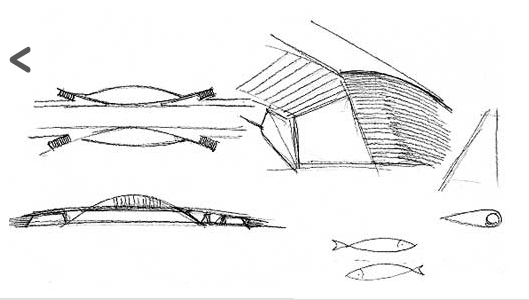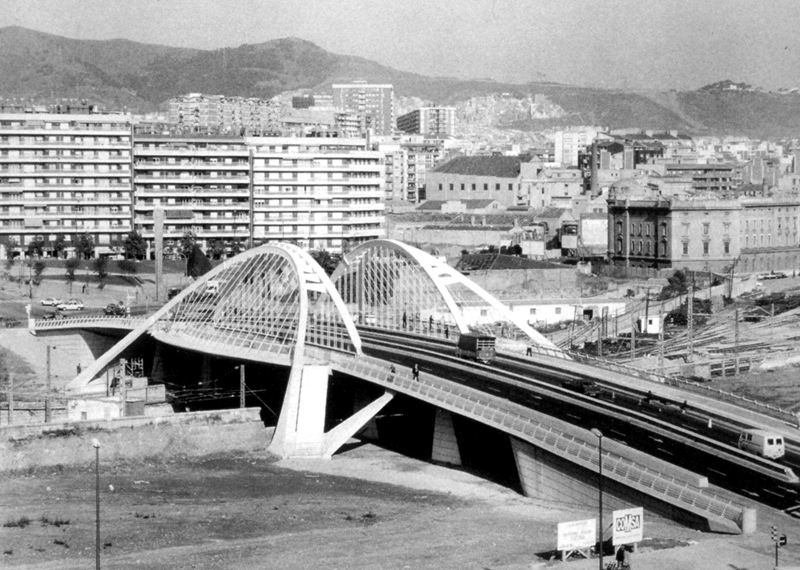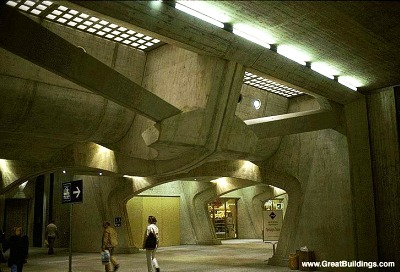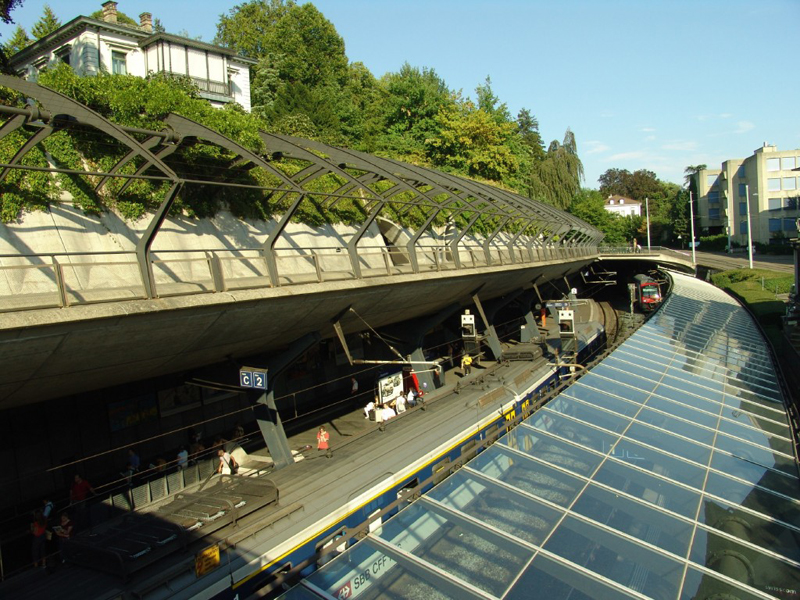Santiago Calatrava is a unique architect. He is not only an architect, but also an engineer and sculptor. Because of this he has, next to architectural knowledge, also knowledge of constructions, mechanics and technical details. He is able to find boundaries of constructions. At that point, the most special constructions can appear.
Bach de Roda Bridge
One of the designs that made Calatrava famous was the Bach de Roda Bridge in Barcelona. The human body inspires this bridge. This is something that Calatrava does often. He relates constructions to the human body. He makes model drawings of human bodies to study forms and relates these drawings to his design. After this he looks as an engineer at his drawing and tries to figure out how to it can be made.
The bridge has a total length of 128 metres. He combined powerful concrete supports, monolithic granite columns and a steel arch structure, which grows lighter as it rises. It shows that Calatrava made a hierarchy in materials and forms, chosen in relation to their distance from the ground.
The special thing about this structure is that there are two independent sets of arches and each is capable of carrying its own section of the bridge. Unlike steel bridges that have been built before, there is no structure above the roadway itself. Stability in the bridge is gained from the sloping outside arches, which have an extreme wide base at their ends. The bridge serves both pedestrians and automobiles and gives access to a beautiful park. He also made balconies, allowing pedestrians to stop along the bridge to enjoy the view.
His older work (like the Zurich railway station 1983-84) is often site related. He considers the surroundings. The reason that this bridge had to be built was to revitalize two poor areas of Barcelona. The city –at that time in 1992– was chosen to host the Olympic games and the bridge was one the first stages of improvement reconnecting a large part of the city with the sea. With this he proved that peripheral urban areas could be regenerated by such a symbolic intervention.
Swimming pool
His early work was also very experimental and innovative in the field of technique and materials. This floating swimming pool is a good example. It is made of plastic and hangs on 24 strings. The form is invented by a combination making models and mathematical calculations. The concept was to take a bath in naked space.
Ernsting’s warehouse [1983-85]
Another project that is innovative in technique, are the folding doors in Ernsting’s Warehouse in Germany. Here he also made some form study’s of the human body. As you can see the folding doors are inspired by the human eye. He decided to cover the structure with untreated aluminium, a typical industrial and light material. They are 13 by 5 metres and the aluminium ribs rise to form a arch that curves inside, creating a overhanging. The form became an experiment in kinetics.
The way Santiago Calatrava explores new forms by combining technique is unique and with this he creates his own recognizable style.







